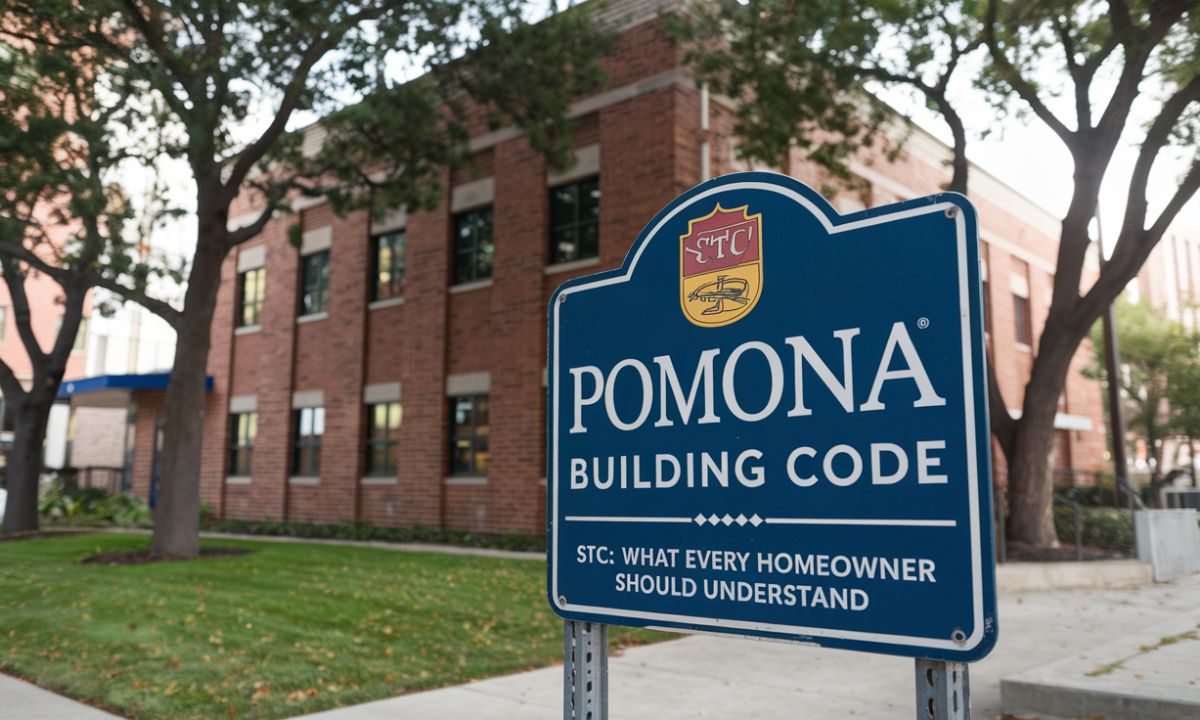In the heart of California’s vibrant urban landscape, Pomona homeowners face a unique challenge: managing the constant bombardment of urban noise. Street sounds, neighboring conversations, and ambient city rhythms can transform your home from a peaceful retreat into a cacophonous environment. The Pomona Building Code for Sound Transmission Class (STC) isn’t just another bureaucratic regulation—it’s your blueprint for acoustic tranquility.
This comprehensive guide demystifies the complex world of sound insulation, offering homeowners practical insights, expert strategies, and essential knowledge to transform their living spaces into quiet, comfortable sanctuaries.
Whether you’re a first-time homeowner, a seasoned property developer, or simply seeking peace and quiet, understanding STC regulations is your first step towards sonic serenity.
Understanding Sound Transmission Class in Pomona’s Residential Landscape
Navigating the intricate world of Pomona building code can feel like deciphering a complex puzzle, especially when it comes to Sound Transmission Class (STC) regulations. Modern homeowners face unprecedented challenges in managing urban noise, making acoustic insulation more critical than ever.
What Exactly is Sound Transmission Class?
Sound Transmission Class represents a sophisticated measurement system that quantifies how effectively building materials block sound between spaces. Think of STC as a superhero rating for your walls, floors, and ceilings—the higher the number, the more powerfully it prevents unwanted noise from invading your living spaces.
Key STC Rating Breakdown
| STC Rating | Sound Blocking Capability | Real-World Example |
| 25-30 | Poor Sound Isolation | Normal conversation easily heard |
| 35-40 | Moderate Sound Reduction | Loud speech partially understood |
| 45-50 | Excellent Sound Blocking | Loud speech barely audible |
| 55-60 | Superior Acoustic Isolation | Extremely minimal sound transmission |
Pomona’s Strict Acoustic Compliance Standards
California’s Building Code mandates rigorous minimum STC ratings for residential structures. In Pomona, these standards aren’t just recommendations—they’re legally enforced requirements designed to protect residents’ quality of life.
Mandatory STC Requirements for Pomona Residences
- Shared Walls Between Units: Minimum STC 50
- Exterior Walls Near Busy Streets: Minimum STC 45
- Interior Living Space Partitions: Minimum STC 40
Practical Soundproofing Strategies for Compliance
Achieving optimal acoustic insulation doesn’t mean breaking the bank. Savvy homeowners can implement cost-effective soundproofing materials and techniques:
- Acoustic Drywall Installation
- Specialized sound-dampening panels
- Increased mass reduces noise transmission
- Relatively affordable retrofitting option
- Resilient Channel Techniques
- Decouples wall surfaces
- Dramatically reduces sound vibration transfer
- Ideal for multi-unit housing configurations
- Advanced Insulation Methods
- Dense mineral wool
- Fiberglass with sound-absorbing properties
- Strategic placement between wall cavities
Field-Tested Assembly Verification
Property developers and homeowners must understand that field-tested assemblies are crucial for genuine acoustic performance. Pomona’s building inspectors conduct thorough assessments to ensure:
- Proper material selection
- Correct installation techniques
- Comprehensive sound barrier implementation
Navigating Noise Pollution Challenges
Urban environments like Pomona present unique noise pollution challenges. Multifamily housing developments require especially sophisticated acoustic design strategies to maintain resident comfort and privacy.
Expert Insight
“Sound transmission isn’t just about comfort—it’s about creating livable, respectful spaces where residents can truly feel at home.” – Michael Rodriguez, Pomona Acoustic Engineering Association
Financial and Legal Implications
Non-compliance with Pomona building code for sound transmission can result in:
- Costly retrofit requirements
- Potential legal disputes
- Reduced property value
- Decreased marketability of residential units
Conclusion: Your Acoustic Comfort Matters
Understanding and implementing proper soundproofing strategies isn’t just a regulatory requirement—it’s an investment in your quality of life. By embracing California’s Building Code standards, Pomona homeowners can create peaceful, noise-resistant living environments.
Pro Tip: Always consult local acoustic professionals who understand Pomona’s specific regulatory landscape before undertaking major soundproofing projects.











